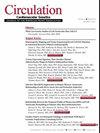代谢人类学:选择压力塑造了格陵兰因纽特人的脂肪酸代谢。
引用次数: 1
摘要
本文章由计算机程序翻译,如有差异,请以英文原文为准。
Metabolic Anthropology: Selection Pressure Shapes Fatty Acid Metabolism in Greenlandic Inuit Populations.
By shaping the genomes of ancient populations, selection pressure allowed individuals to adapt to local environments and stressors.1 Well-known examples include thalassemia and sickle cell disease, which offered protection against malaria in Mediterranean and African populations, respectively. More recently, variations in the lactase gene have been identified among populations with a long history of cattle herding and milk consumption to maintain the ability to metabolize lactose into adulthood.2 Indeed, many of the ancient genetic variations shaped by selection pressure explain the phenotypic and physiological variation across geographically diverse populations that exist today. As is the case with sickle cell disease, however, the benefits of certain genetic variants can disappear, or worse, the variants can become detrimental in environments different from which they were derived.
See Article by Skotte et al
Whereas early investigations in molecular anthropology studied population genetics in relation to anthropometric or physiological characteristics, advances in ‘omics technology now allow the integration of genetic variation with additional molecular data to provide a more granular and mechanistic view of evolutionary adaptation. However, although this integrative molecular approach has been used within populations to characterize the genetic architecture of certain disease states,3–5 its application in unraveling the implications of genetic variation between populations has been limited. As populations …
求助全文
通过发布文献求助,成功后即可免费获取论文全文。
去求助
来源期刊

Circulation: Cardiovascular Genetics
CARDIAC & CARDIOVASCULAR SYSTEMS-GENETICS & HEREDITY
自引率
0.00%
发文量
0
审稿时长
6-12 weeks
期刊介绍:
Circulation: Genomic and Precision Medicine considers all types of original research articles, including studies conducted in human subjects, laboratory animals, in vitro, and in silico. Articles may include investigations of: clinical genetics as applied to the diagnosis and management of monogenic or oligogenic cardiovascular disorders; the molecular basis of complex cardiovascular disorders, including genome-wide association studies, exome and genome sequencing-based association studies, coding variant association studies, genetic linkage studies, epigenomics, transcriptomics, proteomics, metabolomics, and metagenomics; integration of electronic health record data or patient-generated data with any of the aforementioned approaches, including phenome-wide association studies, or with environmental or lifestyle factors; pharmacogenomics; regulation of gene expression; gene therapy and therapeutic genomic editing; systems biology approaches to the diagnosis and management of cardiovascular disorders; novel methods to perform any of the aforementioned studies; and novel applications of precision medicine. Above all, we seek studies with relevance to human cardiovascular biology and disease.
 求助内容:
求助内容: 应助结果提醒方式:
应助结果提醒方式:


